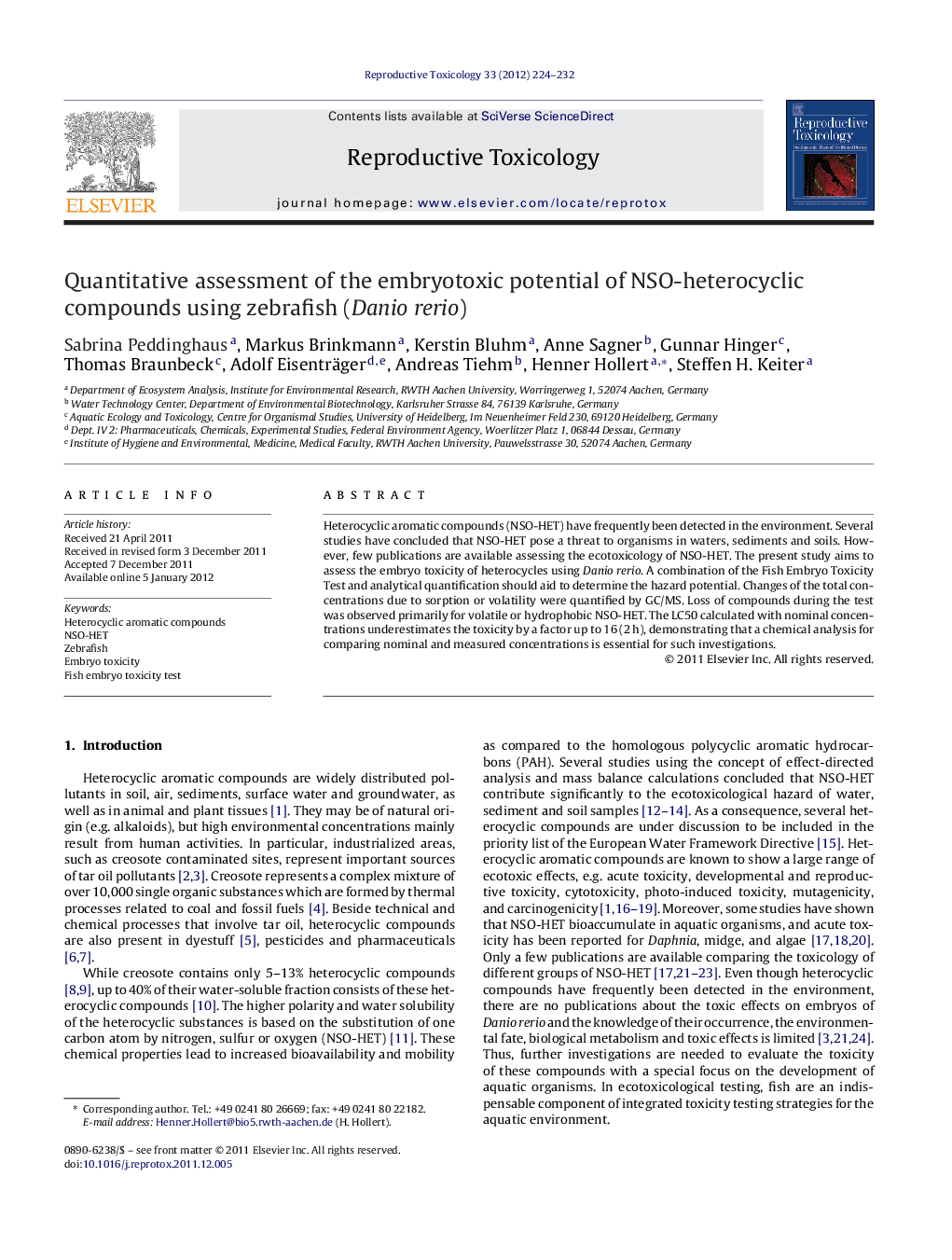| Article ID | Journal | Published Year | Pages | File Type |
|---|---|---|---|---|
| 2593854 | Reproductive Toxicology | 2012 | 9 Pages |
Heterocyclic aromatic compounds (NSO-HET) have frequently been detected in the environment. Several studies have concluded that NSO-HET pose a threat to organisms in waters, sediments and soils. However, few publications are available assessing the ecotoxicology of NSO-HET. The present study aims to assess the embryo toxicity of heterocycles using Danio rerio. A combination of the Fish Embryo Toxicity Test and analytical quantification should aid to determine the hazard potential. Changes of the total concentrations due to sorption or volatility were quantified by GC/MS. Loss of compounds during the test was observed primarily for volatile or hydrophobic NSO-HET. The LC50 calculated with nominal concentrations underestimates the toxicity by a factor up to 16 (2 h), demonstrating that a chemical analysis for comparing nominal and measured concentrations is essential for such investigations.
► Heterocyclic aromatic compounds (NSO-HET) have frequently been detected in the environment. ► A combination of the Fish Embryo Toxicity Test and analytical quantification have been used to determine the hazard potential. ► Acridine and carbazole gave LC50 values of 0.7 and 1.1 mg/L. ► The LC50 calculated with nominal concentrations underestimates the toxicity by a factor up to 16 (2 h).
